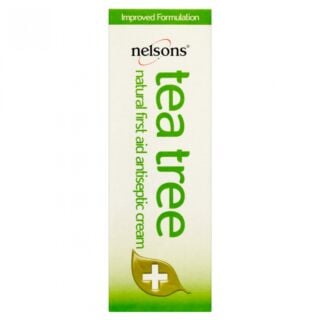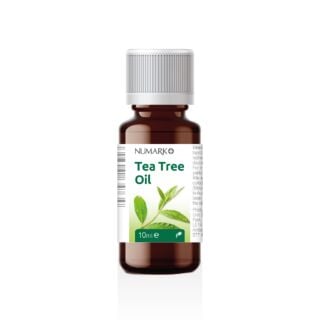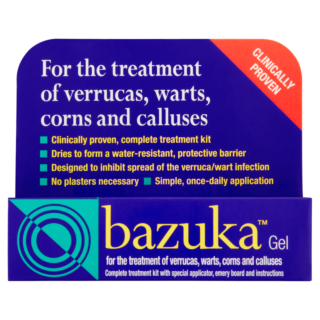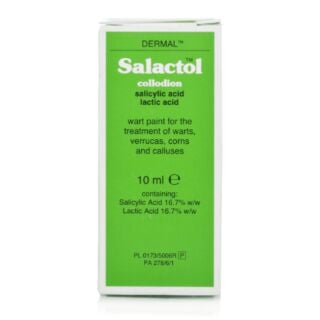14 home remedies for warts and verrucas

Warts and verrucas, though common and harmless, can be embarrassing to deal with. These small growths on the skin are caused by the human papillomavirus (HPV) and can appear on various parts of the body.
While medical treatments are available, many people prefer exploring natural and cost-effective alternatives that they can find in their kitchen or bathroom cabinets!
In this guide, we’ll delve into the 14 home remedies that have gained popularity for their potential effectiveness in managing warts and verrucas.
However, it's important to note that individual results may vary, and what works for one person might not work for another.
If you have concerns or your warts and verrucas are causing you discomfort, consulting a healthcare professional is always recommended.
Do home remedies for warts and verrucas actually work?
Home remedies for warts and verrucas can be effective for some individuals, but their success varies, along with limited scientific evidence. Factors like the type and severity of the wart or verruca play a role in how effective the treatments are.
Results may take time and require patience, as well as proper hygiene and care during treatment. However, there's no guarantee of success, and potential risks like skin irritation or allergic reactions should be considered, too.
What are warts?
Warts are skin growths caused by HPV. They look like raised bumps on the skin and can appear in different sizes and shapes. Warts appear on the hands, fingers, feet and face.
Although genital warts are also caused by the same virus, it’s a different strain and they can only be contracted sexually.
Warts are contagious and can spread through direct contact or damaged skin. They can go away on their own, but some people seek treatment due to their discomfort or appearance.
What are verrucas?
Verrucas (plantar warts) are small growths that appear on the soles of the feet. Again, they are caused by the same virus as warts. They are flat, rough, or slightly raised bumps with a hard, thickened centre.
Black dots may appear in the middle of them, too. Verrucas often cause discomfort or pain when walking or standing, as they can be pushed into the skin due to pressure on the feet.
These growths are typically contracted through direct contact with the virus, often in damp or communal areas like swimming pools and locker rooms.
While verrucas can sometimes resolve on their own, they may require treatment if they cause discomfort or persist.
What is the difference between a callus and a verruca?
A callus is a thickened patch of skin that forms from repeated rubbing or pressure. It's usually painless and looks like a flat, tough area. Calluses can appear on various parts of the body, including the feet and hands.
In contrast, a verruca is a small raised bump on the sole of the foot caused by a virus. Verrucas can have a rough surface and might be painful, especially when pressed. They can also have tiny black dots inside them.
Unlike calluses, verrucas are contagious and are contracted through direct contact with the virus in places like communal showers. If you're unsure about a growth on your feet, it's best to consult a healthcare professional for proper guidance.

Home remedies for warts
Explore these 7 wart removal home remedies. From common kitchen ingredients to age-old practices, these remedies offer alternatives to medical treatments.
-
1. Apple cider vinegar
Apple cider vinegar is thought to work on warts because of its acidic nature, primarily due to a substance called acetic acid.
The acid is believed to have a few effects on the wart: it might help break down the outer layers of the wart, act as a gentle exfoliator by removing dead skin cells, potentially affect the virus causing warts (HPV), and possibly stimulate a localised immune response.
-
2. Banana peel
Using a banana peel for warts is based on the idea that compounds in the peel could be helpful. The peel contains enzymes and mild acids, like salicylic acid found in wart treatments, which might break down the wart tissue.
Moisture in the peel could soften the skin and nutrients might aid healing. Some believe the peel could trigger the body's immune system response to address the wart.
-
3. Orange peel
Using an orange peel for wart treatment involves placing a small piece of the inner side of the orange peel (the white part) onto the wart.
You secure it with tape and leave it on for a few hours or overnight, repeating daily. Orange peels are thought to have natural compounds that might affect warts, but scientific proof is limited.
-
4. Garlic
Using garlic for wart treatment involves placing a small piece of fresh garlic onto the wart, securing it with tape and leaving it on for around 10-15 minutes.
Garlic is believed to treat warts due to its potential antimicrobial and antiviral properties, such as allicin.
-
5. Tea tree oil
Tea tree oil is a popular home remedy for treating warts. To use it, clean the wart area, dilute a few drops of tea tree oil with a carrier oil and apply it using a cotton swab.
Cover the treated area with a bandage and repeat daily. Tea tree oil is thought to have antiviral properties that might help with wart removal.
-
6. Duct tape
The duct tape method is thought to work by creating a barrier that suffocates the wart and stimulates the body's immune response to fight it.
It's non-invasive and cost-effective, requiring only duct tape. Unlike some treatments, it avoids harsh chemicals and generally causes minimal discomfort.
-
7. Clear nail polish
The clear nail polish method is believed to work by suffocating the wart, creating an environment that may weaken the wart.

Home remedies for verrucas
Don’t suffer with that verruca - let’s dive into these 7 home verruca remedies. Just remember, everyone's experience is different, so talk to a healthcare professional if your verruca is being stubborn or bothersome.
-
1. Salicylic acid
To use salicylic acid, first clean the verruca and surrounding skin, then apply a bit of salicylic acid solution or gel directly onto the verruca. Let it dry and optionally cover it with a bandage.
Repeat this daily, following the product's instructions. After a few days, gently exfoliate the area with a pumice stone or file. Be patient, as results might take time.
Salicylic acid softens the verruca's layers, gradually aiding in its removal.
-
2. Iodine
Iodine is thought to have antiseptic properties that might affect verrucas, but scientific proof is limited and not all verrucas respond to the treatment. Patience is needed, as results might take time to become noticeable.
-
3. Hot water soak
Fill a basin with comfortably hot water and immerse the affected area, including the verruca, for about 15-20 minutes.
After soaking, gently exfoliate the verruca. Repeat this daily. Hot water soaks are thought to soften the skin and verruca, potentially helping with its removal.
-
4. Onion
Using an onion as a natural home remedy for verruca treatment involves rubbing a small slice of fresh onion onto the verruca for a few minutes. Allow the onion juice to dry on the skin.
Repeat this a few times a day. Some believe that the compounds in onions, like sulphur compounds and quercetin, could have antiviral and skin-soothing effects.
-
5. Tea tree oil
Tea tree oil is thought to possess natural antiviral properties that could combat the verruca-causing virus.
This method is non-invasive, accessible and affordable, making it a convenient choice. Unlike some medical treatments, tea tree oil avoids harsh chemicals and is easy to apply. Its antimicrobial effects might also help prevent infection.
-
6. Apple cider vinegar
For verrucas, the acidic properties of apple cider vinegar are thought to help soften the hardened skin layers that form over the verruca.
This might gradually break down the verruca's surface and contribute to its removal.
-
7. Sandpaper and duct tape
Trying duct tape and sandpaper as a home remedy for verruca treatment involves applying duct tape over the verruca for about six days, then removing it and gently exfoliating the verruca with sandpaper.
The duct tape is believed to suffocate the verruca and stimulate the immune response, while the sandpaper helps remove the verruca's thick, dead skin layers.

In exploring these 14 home remedies for warts and verrucas, you've discovered a range of natural approaches to get rid of those pesky skin growths. From the gentle exfoliation of sandpaper to the potential antiviral properties of tea tree oil, the choice is yours!
While options like liquid nitrogen can provide rapid results, these home remedies are a great option to try first, and it’s as simple as rooting in your kitchen or bathroom cabinets for the right ingredients.
Remember that patience is key, as changes may take time to appear. Additionally, incorporating practices to prevent warts, such as proper hygiene and avoiding direct contact, is essential.
Always monitor your skin's response and consider seeking professional advice if needed.









